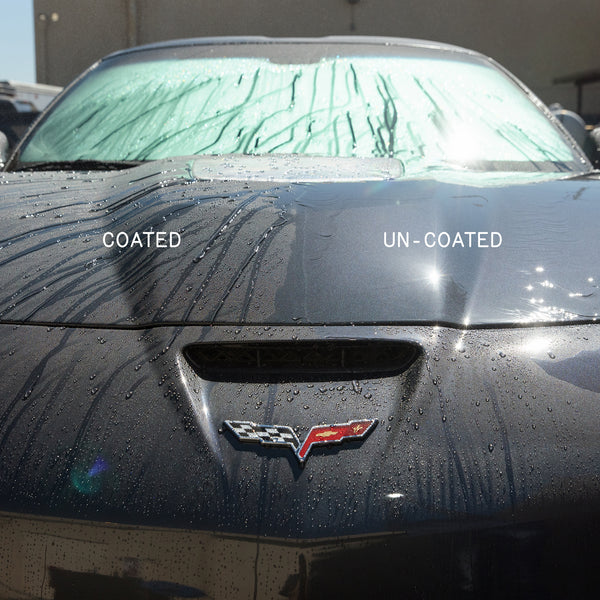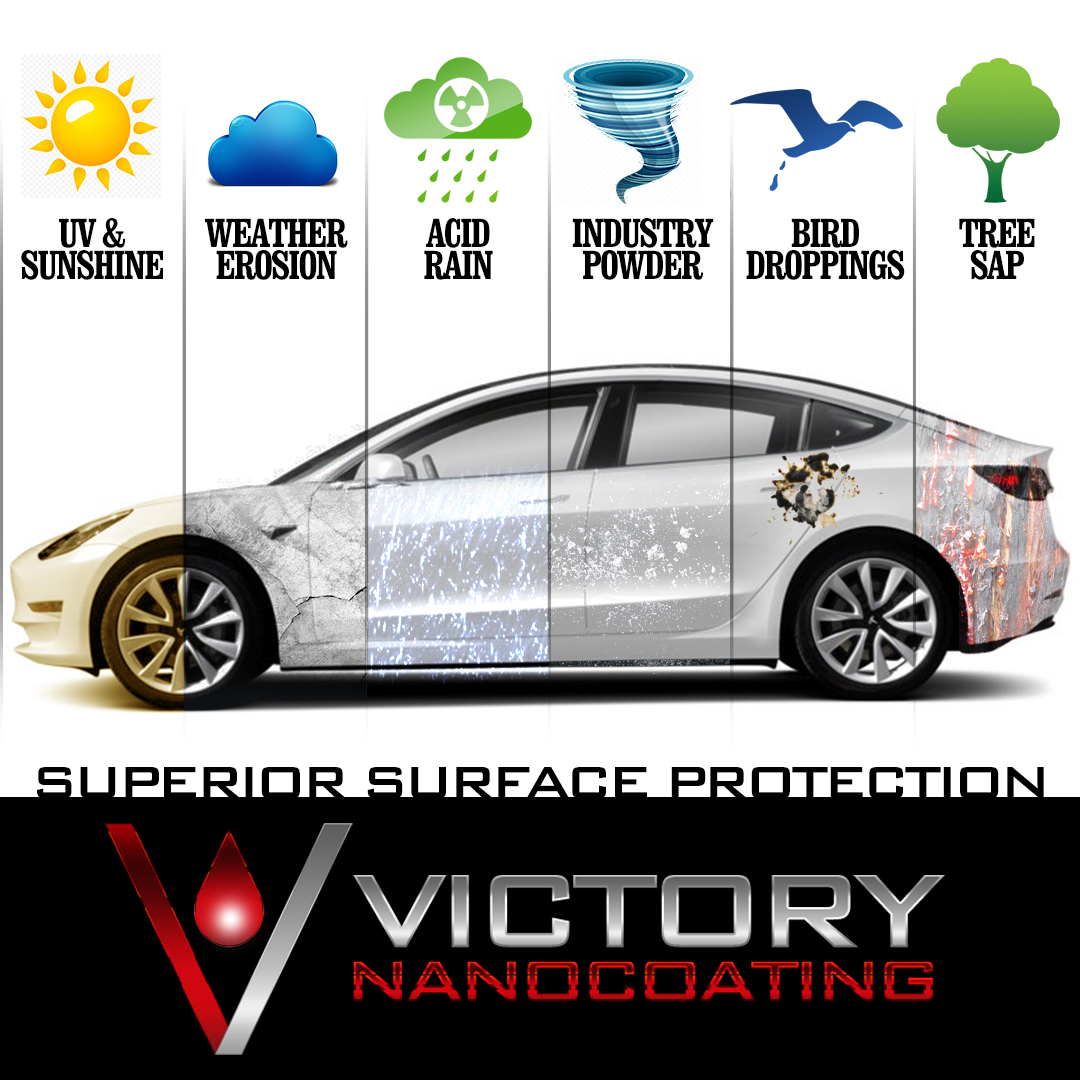How Ceramic Coating Shields Your Automobile from Scratches and UV Damage
Checking Out the Science Behind Ceramic Finish and Its Effect On Vehicle Detailing
The application of ceramic covering in automobile outlining stands for a significant improvement in auto care, rooted in its advanced chemical residential or commercial properties, primarily silica dioxide and titanium dioxide. As we explore the intricacies of the application procedure and the lasting implications for vehicle upkeep, it ends up being clear that the option of ceramic coating can fundamentally change one's approach to vehicle treatment.
What Is Ceramic Covering?
Ceramic covering is a modern-day solution that has gained popularity in the automotive detailing market for its ability to provide long-lasting protection for car surfaces. This advanced protective layer is normally made up of silica dioxide (SiO2), which forms a strong bond with the vehicle's paint, creating a durable guard versus ecological impurities. Unlike traditional wax or sealers, ceramic coatings supply exceptional resistance to UV rays, chemical stains, and physical abrasions.
The application of ceramic layer entails a meticulous process, where the automobile's surface area is thoroughly cleaned up and sanitized before the layer is used (Ceramic Coating). As soon as treated, the covering improves the lorry's gloss, depth, and clarity, supplying a showroom-quality surface that lasts for years. One of the key benefits of ceramic covering is its hydrophobic residential or commercial properties, which push back water and dust, making upkeep easier and decreasing the regularity of cleans
The Chemistry of Ceramic Coating
A fundamental element of ceramic finish hinges on its chemical structure, primarily characterized by the existence of silica dioxide (SiO2) This substance is important to the development of a sturdy, protective layer that bonds chemically to the lorry's surface area. When used, the SiO2 molecules undertake a procedure called polymerization, where they develop a network of interconnected structures. This results in a durable, hydrophobic surface that repels water and impurities.
In addition to SiO2, lots of ceramic coatings integrate titanium dioxide (TiO2) and other additives to improve their performance attributes. TiO2, as an example, adds to enhanced solidity and chemical resistance. The communication in between these compounds produces a special molecular framework that uses a high degree of defense versus ecological variables such as UV rays, acid rainfall, and oxidation.
Additionally, the application process frequently involves a careful prep work of the surface area to guarantee optimal bond of the finishing. This chemistry not only makes certain a lasting finish yet additionally enhances the aesthetic appeal of the automobile. Comprehending the detailed chemistry behind ceramic layers is vital for outlining experts that intend to offer superior protection and longevity for their customers' vehicles.
Benefits of Ceramic Layer
While outlining professionals often highlight the advantages of ceramic finishes, their benefits extend much past appearances. The main advantage is premium protection versus ecological impurities. Ceramic finishes develop a hydrophobic surface area that drives away dust, grime, and water, significantly lowering the frequency of washes and the effort called for to maintain an automobile's look. This safety layer also guards the paint from unsafe ultraviolet rays, stopping oxidation and fading over time.
Moreover, ceramic layers boost the durability of the lorry's surface. Unlike standard waxes or sealers, which might last a few months, ceramic layers can sustain for several years, giving a long-term solution for cars and truck treatment. This toughness equates to set you back savings, as proprietors are less likely to require regular reapplication.
Furthermore, ceramic coatings are resistant to chemical spots and etching, which can happen from acidic substances like bird droppings or tree sap. This resistance not just preserves the car's aesthetics but also minimizes possible damages - Ceramic Coating. In general, the financial investment in ceramic finishing supplies automobile proprietors a substantial return more info here in terms of defense, ease of maintenance, and lasting aesthetic appeal, making it a progressively popular option in the world of vehicle outlining
Application Refine Described

Once the surface area is adequately prepared, the ceramic coating can be used. Using an applicator pad, the specialist applies the coating in tiny sections, working in a crosshatch pattern to make certain even coverage.
After applying the coating, the car needs to be permitted to heal, which may take several hours to several days, depending upon the certain product utilized. Throughout this duration, it is vital to maintain the lorry far from wetness and contaminants. As soon as treated, the ceramic covering develops a strong bond with the paint, giving boosted defense and a shiny surface. Appropriate application is important to make best use of the longevity and efficiency of the ceramic finishing.

Long-lasting Effect On Car Treatment
The long-lasting effect of ceramic finishing on car care is substantial, as it basically changes just how owners preserve their automobiles. By creating a resilient, hydrophobic layer on the vehicle's review surface area, ceramic layers reduce the adherence of dust, crud, and contaminants. This building reduces the regularity of washing required, eventually preserving water and cleansing items.
In Addition, the UV protection provided by ceramic coatings assists to protect against oxidation and fading of the lorry's paint, maintaining its aesthetic allure and resale value gradually - Ceramic Coating. This protective obstacle additionally minimizes the probability of scratches and swirl marks, which prevail problems in traditional paint coatings
Moreover, ceramic finishings facilitate less complicated maintenance, permitting proprietors to clean their vehicles with very little effort. The smooth surface makes it hard for pollutants to bond, allowing less complex elimination throughout routine cleaning.
In the future, the investment in ceramic coating might lead to set you back savings in lorry care products and services. Generally, the withstanding advantages of ceramic layers not just improve the appearance of vehicles yet also add to an extra reliable and lasting approach to automobile maintenance.
Conclusion
To conclude, the application of ceramic coating stands for a considerable innovation in auto outlining, driven by its unique chemical structure of silica dioxide and titanium dioxide. This innovation not just boosts the aesthetic charm of vehicles however likewise offers durable defense against ecological risks and put on. The long-term advantages, including decreased upkeep frequency and improved toughness, emphasize the value of ceramic layers as an important investment for keeping lorry appearance and integrity in time.
